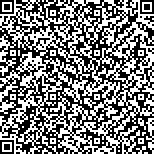付丽、高晓平、张旭、宋娟、李键、张刚.脑卒中后偏瘫上肢康复过程中表面肌电分析[J].中华物理医学与康复杂志,2016,38(5):356-361
扫码阅读全文

|
| 脑卒中后偏瘫上肢康复过程中表面肌电分析 |
|
| |
| DOI: |
| 中文关键词: 脑卒中 上肢 表面肌电图 康复 |
| 英文关键词: Stroke Upper extremities Surface electromyography Rehabilitation |
| 基金项目:国家自然科学基金(61401421);中央高校基本科研业务费专项资金(WK2100230014) |
|
| 摘要点击次数: 2833 |
| 全文下载次数: 4148 |
| 中文摘要: |
| 目的 观察脑卒中偏瘫患者在康复进程中其偏瘫侧肱二头肌、拇短屈肌及第一骨间背侧肌做最大等长收缩时表面肌电信号(sEMG)变化及其与上肢运动功能恢复间的相关性,为临床制订个体化康复干预方案提供参考资料。 方法 选取20例脑卒中患者(将其纳入实验组)及10例年龄、性别与患者相匹配的健康志愿者(将其纳入正常对照组)。记录所有受试者双侧上肢分别做肘屈、拇屈、食指外展最大等长收缩时肱二头肌、拇短屈肌、第一骨间背侧肌sEMG信号,并跟踪记录患者偏瘫侧上述肌肉sEMG在康复进程中的变化;采用简式上肢Fugl-Meyer量表(FMA)和徒手肌力评定(MMT)评估患者上肢运动功能及肌力改善情况,计算sEMG信号的均方根值(RMS)、中值频率(MDF)及与上肢FMA、MMT评分的相关性。 结果 正常对照组所检肌群RMS及MDF值左、右侧间差异均无统计学意义(P>0.05);实验组偏瘫侧所检肌肉RMS、MDF值均显著小于健侧及正常对照组水平(P<0.05),健侧RMS、MDF值均显著大于正常对照组水平(P<0.05)。实验组偏瘫侧所检肌肉RMS、MDF值随康复日程延长呈上升趋势,且末次检测值明显大于首次检测值(P<0.05)。实验组患者上肢FMA评分、MMT评分与上肢所检肌肉RMS值、MDF值均具有正相关性。 结论 脑卒中偏瘫侧上肢sEMG既可反映上肢康复进程,又能反映肌力及运动功能恢复情况,可作为一种定量康复评估指标,从而为制订个体化上肢功能康复训练方案提供参考资料。 |
| 英文摘要: |
| Objective To explore any changes in the surface electromyography (sEMG) signals measured from the biceps brachii, flexor pollicis brevis and the first dorsal interosseous muscles of stroke survivors with hemiparesis during maximum isometric voluntary contractions. To correlate them with motor function recovery so as to provide a reference in making up individualized rehabilitation programs. Methods Twenty stroke survivors with hemiparesis were selected as the experimental group, and 10 healthy counterparts were recruited as the control group. For all of them, sEMG signals were recorded bilaterally from the biceps brachii, flexor pollicis brevis and the first dorsal interosseous muscles during maximum isometric voluntary contractions involving elbow flexion, thumb flexion and index finger abduction. For the stroke patients, such recording was performed repeatedly on the paretic side during the course of convalescence. Both root-mean-square (RMS) amplitude and median frequency (MDF) were calculated for the recorded surface EMG signals. The upper-extremity component of the Fugl-Meyer assessment scale (FMA-UE) and manual testing (MMT) of each muscle examined were performed with each stroke patient to assess motor function and upper extremity muscle strength. Results There were no significant differences in either RMS amplitude or MDF between the left and right sides of the healthy control subjects. Significant differences in both RMS amplitude and MDF were observed for the stroke survivors and between their values and those of the controls. The patients′ unaffected side had significantly larger RMS amplitude and MDF than either side of the healthy control group. For the affected side of the stroke patients, both RMS amplitude and MDF tended to increase during the course of rehabilitation, with significant differences between the values obtained at the first and the last sessions. The FMA-UE scores and MMT results on the affected side were positively correlated with the RMS amplitudes and MDF results for the upper extremity muscles. Conclusions Surface electromyography is able to reflect the rehabilitation process and the recovery of muscle strength and motor function. It can be considered as a quantitative index for evaluating rehabilitation and a useful reference for designing targeted functional training programs. |
|
查看全文
查看/发表评论 下载PDF阅读器 |
| 关闭 |